Sarah E. Guthrie: Commander (Baltimore, MD, USA)
Sarah E. Guthrie is a Space Studies (astronomy) graduate student in the School of Science, Technology, Engineering and Math with American Military University. She is a three-time analog astronaut and the first female commander for the APUS Analog Research Group. In addition to her academic studies, she is also a 20-year active-duty veteran in the United States Air Force. Her unique deployment experience with multiple tours to Iraq and Afghanistan provided her an opportunity to bring combat rescue techniques to needed lunar surface operations. Additionally, she is a co-investigator on various projects that focus on adaptive mobility load distribution systems for extra-vehicular activities, astronaut resource impact, and behavioral health studies for long-term space flight. She is also a research advisor for Space4All on analog research projects at terrestrial habitats. Her call sign is Ceres.
Alexis “Lex” Lojek: Crew Engineer (Oahu, HI, USA)
Lex is a second-year Master’s thesis student within the School of Science, Technology, Engineering, and Mathematics at American Military University. His research is in the realm of Spaceflight Human Factors and is focused on measurement of stress using physiological factors, specifically heartrate variability, through the use of a Garmin VivoSmart 4 device, and a potential mitigation for stress – focused breathing. He graduated with a degree in Applied Science and Technology from Thomas Edison State University in 2020. He is Active Duty in the United States Navy and has been for over 17 years. During his time as a US Navy Sailor, he has deployed four times; three as an Aviation Electronics Technician for the F/A-18F Super Hornet onboard three aircraft carriers, and once to Djibouti City, Djibouti as a Cryptologic Technician. He has hopes to pursue a commission into the US Space Force as a Space Operations officer after completion of his graduate school degree in June. His crew call sign is Kepler.
Nicholas Pender: Health and Safety Officer (Brownsville, TX, USA)
Nicholas Pender is a second-year master’s thesis student in the School of Science, Technology, Engineering and Math at American Military University. He also has a Bachelors of Science in Supply Chain, Logistics, and Transportation Management at Bellevue University. His research is focused on the application of supply caches to extend extravehicular activities (EVAs) on Mars and leveraging supply cache technology as a basis for future EVA policy. Nicholas is a Logistics Planner in the U.S. Air Force and an Education with Industry Fellow at Space Exploration Technologies, Corp (SpaceX). His call sign is X-Man.
Noah Loy: Heliophysics (Denver, CO, USA)
Noah Loy is a Space Studies and Civil Engineering undergrad at the American Military University and the University of Colorado, respectively. Noah is researching heliophysics phenomena to analyze space weather and its implications for orbital assets. Noah is a space engineer and intelligence analyst for the United States Space Force, where he is also collaborating with multiple DoD Space Test Programs researching space vehicle development and orbital Starlink internet reliability. His crew call sign is Phoenix.
Tony DiBernardo: Media & Communications (Mission Viejo, CA, USA)
Tony DiBernardo is a Space Studies grad student at the American Public University. Currently, he focuses his education and outreach to educating the general public about space on platforms like Youtube, Instagram, and Podcast form. In this mission, Tony will take high fidelity footage of the Mars analog environment for use in experiment spotlights, documentary, daily vlogs, and educational resources for social media. His crew call sign is Ironman.
Salina Peña: Crew Astronomer (Pier Pont, South Dakota, USA)
Salina Peña is a master’s student at American Public University. Her interest is in the field of astronomy. She is currently working on her thesis in the area of Variable Stars. As a student, she participates in the APUS Supernovae group as a team lead and processing images. Salina holds another master’s degree focusing on education with a certification in STEM. Currently, she is a middle school science educator. After completing the Space Studies Master’s program at APUS, she will continue her education, looking for a Ph.D. program at a university in astronomy or astrophysics. Her crew call sign is Nova.
Tyler Hines: GreenHab Officer (Parkersburg, West Virginia, USA)
Tyler Hines is an undergraduate student at American Public University pursuing a Bachelor of Science in Space Studies concentrating in Aerospace Science and a minor in Business Administration. As an active extracurricular student, he currently serves both as the university’s Students for the Exploration and Development of Space (SEDS) President and Chief of Staff for the Analog Astronaut Research Group (AARG). In his spare time, he volunteers as a docent for the American Space Museum in Florida and as a member of NASA’s Solar System Ambassador Program, where he conducts outreach presentations to the general public on the story of the nation’s space program. During the mission, his research focus will be to conduct germination studies on long-duration space-exposed seeds in simulated Martian regolith samples. His
crew call sign is “Houston”.
William O’Hara: Habitat Structure Specialist (Loveland, CO, USA)
Bill worked at the Johnson Space Center in Houston Texas for 20 years. During that time he held a variety of positions including astronaut instructor, MCC flight controller for NASA’s International Space Station program, Orion Life Support System Lead, and advanced life support systems development project engineer. He relocated to Denver Colorado in 2018 to develop orbital and lunar habitats and landers for Sierra Space. Currently, Bill is the Lunar Habitat Formulation lead for Blue Origin’s Advanced Development Group. He specializes in the design and development of deep space and planetary surface habitats as well as robotic landing spacecraft. Bill is a part-time instructor for the American Public University System’s Space Sciences department and supports the APU Analog Research Group as a faculty advisor. Bill is also a part-time PhD student at the University of North Dakota where he is researching the development of a habitat architecture that could enable humans to live on Titan, Saturn’s largest moon. A veteran of NASA’s human test subject program, he flew on nine flights aboard the KC135 Vomit Comet. He has been a crewmember on three analog missions. In 2014 he was a member of the third crew to live in NASA’s Human Exploration Research Analog (HERA) habitat. In 2018 he was a member of an expedition to the Haughton Mars Project Research Station (HMPRS) located on Devon Island in the high Canadian Arctic. In 2021 he served as a crewmember to the Hawaii Space Exploration Analog and Simulation (HI-SEAS) as well as the University of North Dakota’s Inflatable Lunar-Mars Analog Habitat (ILMAH). His crew call sign is Titan.


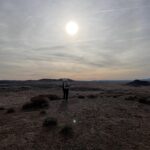
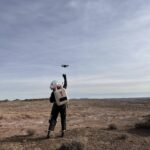
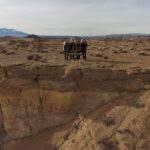
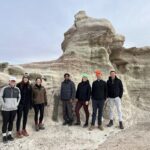
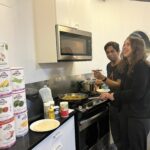
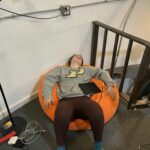


You must be logged in to post a comment.